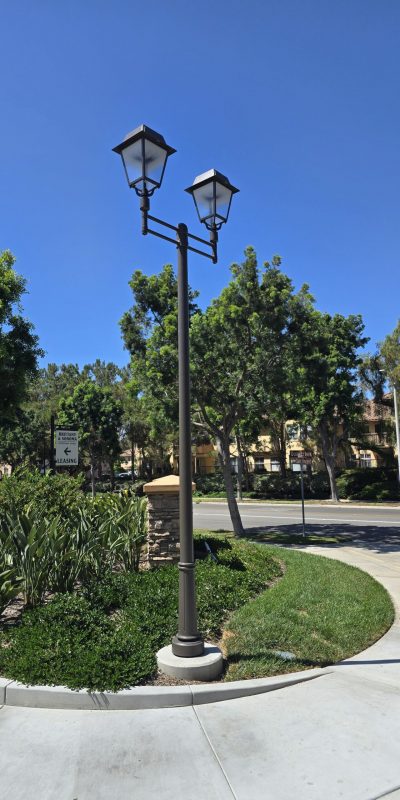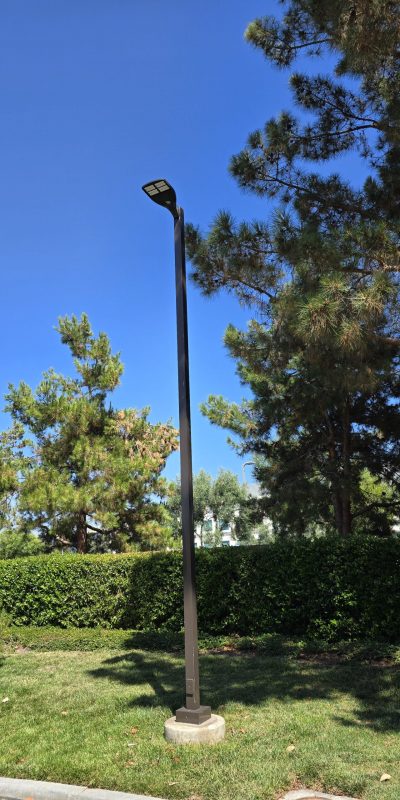When to Consider Replacing a Light Pole
Knowing when to replace a light pole is crucial for preventing safety hazards and ensuring optimal lighting. If your light poles show signs of severe rust, leaning, or damage that compromises their structural integrity, a full replacement is often the safest option. Additionally, poles with extensive electrical issues, such as damaged wiring or corroded connections, may require replacement instead of repair.
LED Light Pole Retrofits for Increased Energy Efficiency
Upgrading your lighting system with LED light pole retrofits is one of the best ways to improve energy efficiency and reduce maintenance costs. Older lighting systems, like high-pressure sodium or metal halide poles, consume significantly more energy and require frequent bulb replacements, making them less efficient over time. LED retrofits offer brighter, longer-lasting light while reducing energy consumption by up to 50%.
By retrofitting your existing light poles with LEDs, you’ll also benefit from lower maintenance needs. LEDs have a much longer lifespan than traditional bulbs, meaning fewer replacements and less downtime. This is especially important for parking lots, sports fields, and roadways, where reliable lighting is essential for safety. Retrofitting your light poles ensures that your property remains well-lit while keeping energy costs low.
Upgrading Outdated High-Pressure Sodium and Metal Halide Poles
If your property is still using high-pressure sodium or metal halide light poles, it may be time to consider an upgrade. These older systems are not only less energy-efficient but also provide lower-quality light compared to modern LED poles. The yellowish hue of high-pressure sodium lighting, for example, can reduce visibility in parking lots and along roadways, making it harder for drivers and pedestrians to see clearly.


